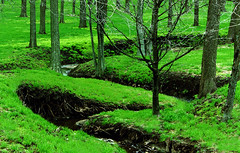Basic post-processing
 A camera’s exposure system is designed to calculate all of the light levels coming into the camera and set an exposure that averages all the light to match a neutral gray tone. The result of all that averaging is usually a photo that looks, well – average. And we all know the people and pets in your life are anything but average.
A camera’s exposure system is designed to calculate all of the light levels coming into the camera and set an exposure that averages all the light to match a neutral gray tone. The result of all that averaging is usually a photo that looks, well – average. And we all know the people and pets in your life are anything but average. The photo above, on the left, is what a Kodak Easyshare C633 presented of my adopted stray cat, Poly. (You can find out how she came upon her name with one “L” here). The photo is kind of gray and murky. Average.
A little work in a photo editing program (in this case, PhotoShop) brings the photo back to life and gets closer to what my eyes saw as I pressed the shutter button. I started by increasing the overall contrast. In PhotoShop this is accomplished in the Adjust/Levels dialog box by sliding the left and right sliders toward the center, then sliding the midtones to the left, brightening the photo. A similar effect can be achieved by increasing the contrast and brightness settings if your photo editing program is a simple one.
I then increased the color saturation, then selected everything except the cat’s face (in PhotoShop, I used the elliptical selector, lasso’d the face, then inverted the selection). I feathered the edges of the selection, decreased the levels of the background, then applied a blur. The resulting effect (photo on the right) really brought out the cat’s eyes, which I wanted to be the focal point of the picture. In fact, when taking photos of people or animals, focus on the eyes.
I then used the clone tool to make some adjustments to the catch lights in her eyes (raised and moved out of the irises), and I was finished.
Using a photo editing program after you’ve created a picture is not cheating. It’s unlocking the information that’s inherent in your photo, but has just been rendered as “average.”
Labels: Exposure, Post-processing








